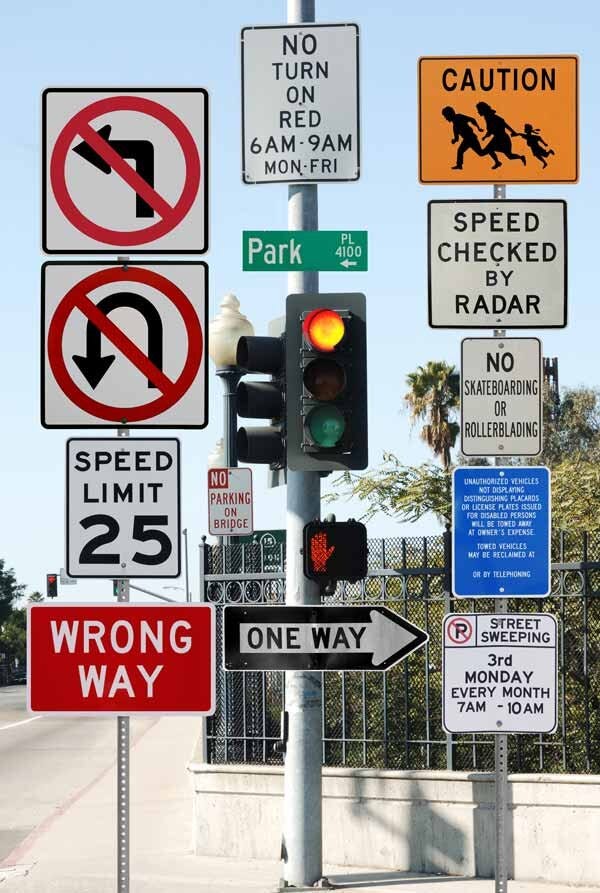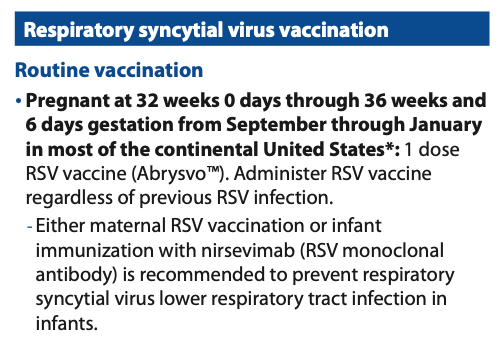The Responsibility of Signs
Is iatrogenic harm (and death) from the RSV shots due to The Schedule?
Humans are largely visual creatures. Visual signs and cues are one of the first things the brain uses to respond to the myriad of signals we encounter. By necessity, these visual cues often trigger trained and conditioned responses, sometimes without much considered thought.
Information formatting can be extremely impactful: sometimes helpful, and sometimes not. But even the best formatting can result in a failure if the information is wrong or inappropriate.
How does The Schedule function in this context?
There are two applicable failure modes in sign presentation:
Signal overload (too much information at once, poor format)
Poor information quality (erroneous, confusing, or contradictory information)
The Defender recently reported on a study in Pediatrics entitled, Incorrect Administration of Adult RSV Vaccines to Young Children".1
This is not a one-off thing.
The Defender piece goes on to reveal the assessment by a Pfizer-funded researcher.
Mistakes like this can be due to human error or changes to a practice or process, but it can very easily be due to the nature of the information presented and the formatting of that information.
Case in point: the CDC's 2024 Immunization Schedule.
Nirsevimab, the monoclonal antibody shot is clearly visible (circled in red), top line of Table 1.
Seems straightforward enough.
But as has been stressed before, the devil is in the details here. Check page 11.
Listed in the Notes for the Recommended Child and Adolescent Immunization Schedule for Ages 18 Years or Younger, BOTH RSV-mAb Nirsevimab and Abrysvo are listed adjacently on the same page.
Abrysvo is not licensed for children.
One product is for infants and children and the other is for pregnant mothers.
Why list both products on The Schedule for children and adolescents?
Why format the information for both shots with the same graphic quality, increasing the potential for confusion?
Further complicating matters, the Recommended Adult Immunization Schedule for Ages 19 Years or Older, specifies only Pfizer’s Abrysvo allowed in pregnancy, but presents the ‘routine’ vaccination as a choice between either jabbing the infant or the mother.
Simultaneously, either Pfizer’s Abrysvo or GSK’s Arexvy are listed for people 60 years and older.
The errors documented in the Pediatrics study would indicate that there is confusion and misunderstanding on the part of those administering the shots regarding equivalency between these products.
Not included in the Pediatrics study, there is a VAERS report of a 27 day old infant who died immediately after being given the Abrysvo product.
There’s more dirt on the RSV shots; check out Albert Benavides for more on that beat.
But the question being asked here is straightforward:
Does the format of The Schedule contribute to medical errors and iatrogenic harm?
Reiterating from a previous post:
Most people expect schedules to be clean and straightforward. We all know these things: class schedules, meeting schedules, work schedules, a schedule of tasks, etc. Schedules are created to make things simple, easily digested, memorable, and followed.
Clear, easily digested, and easily followed it is not.
Beyond specific concerns with the RSV product approvals by the FDA and documented risks, there’s a case to be made here that The Schedule itself contributes to medical errors and iatrogenic harm.
The Schedule is a problem, in more ways than one.
Blame the CDC, they built it.
#questioneverything
Information wants to be free—and over 90% of the content here is accessible to anyone. But everything takes care and time. If you like what you see, and you’re willing and able, consider leaving a tip. Every a little bit helps. Thank you!
Pedro L. Moro, Anne Scheffey, Ruth Gallego, Jefferson M. Jones, Elisha Hall, Bicheng Zhang, Katherine E. Fleming-Dutra, Karen R. Broder; Incorrect Administration of Adult RSV Vaccines to Young Children. Pediatrics 2024; e2024066174. 10.1542/peds.2024-066174












Thank you for the shout out, The Eagle is Albert and Albert is the Eagle! I believe there is confusion amongst the the OB's & Peds that are administering this garbage. I think somewhere in the soup they are doing it on purpose (experimenting). As you know but the general community at large does not is that Beyfortus and Synagis the monoclonals (Palivizumab & Nirsevimab) or "quasi" vaccines aimed at infants have caused much damage already. Since they are not official vaccines, injuries are not obligated or encouraged for SAE's to be entered in VAERS. A person can't even select these monoclonals off a pick list in VAERS. However, people are either choosing "Unknown" vax type or writing it in narrative as "concomitant" meds in other fields. Vaersaware.com my website has identified these reports and gave these reports official designations. These monoclonals are associated to at least 49 deaths in VAERS.